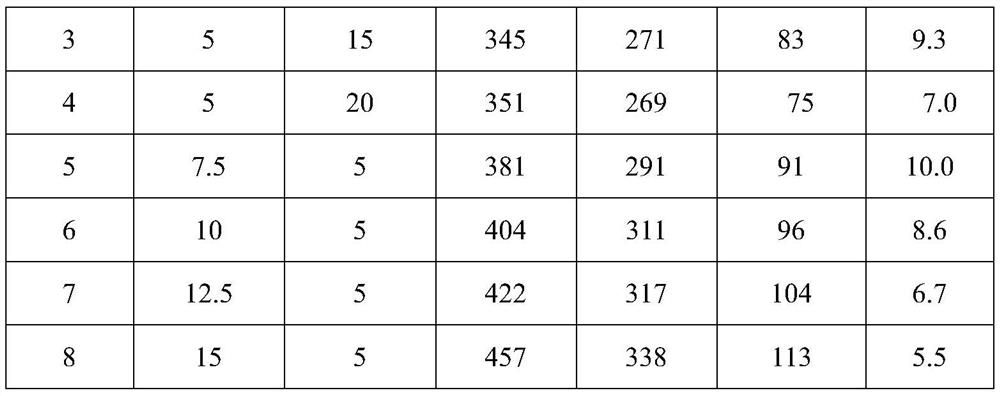A Method for Filament Printing of Aluminum Silicon Carbide Composite Materials by Arc Additive Manufacturing
A composite material, aluminum silicon carbide technology, which is applied in the field of metal matrix composite materials and additive manufacturing, can solve the problems of difficult machining of aluminum silicon carbide composite materials, heavy loss of material, waste of material cost, etc., and achieve high specific stiffness, The effect of saving processing cost and simplifying the processing process
- Summary
- Abstract
- Description
- Claims
- Application Information
AI Technical Summary
Problems solved by technology
Method used
Image
Examples
Embodiment 1
[0036] A method for printing aluminum-silicon carbide composite filaments with electric arc additive manufacturing, comprising the steps of:
[0037] 1) Ingots of AlSiC composite materials with a mass fraction of 5% were kept at 150°C for 6 hours;
[0038] 2) Do equal-channel extrusion of the processed composite material at a temperature of 450°C, and the deformation after extrusion is 400%;
[0039] 3) Preheat the extruded material for a period of time and then draw it into filaments. The drawing temperature is about 500°C, the deformation in a single pass is 10%, and the drawing speed is 20mm / s;
[0040] 4) Load the drawn wire into the machine, model the printed workpiece, determine the height of the additive layer, and digitally slice the part; import the model into the machine, and the machine performs operations according to the additive code to print the wire;
[0041] 5) Run the program and start printing. The printing parameters are: the wire feeding speed is 5mm / s, a...
Embodiment 2
[0044] A method for printing aluminum-silicon carbide composite filaments with electric arc additive manufacturing, comprising the steps of:
[0045] 1) Ingots of AlSiC composite materials with a mass fraction of 5% were kept at 150°C for 6 hours;
[0046]2) Do equal-channel extrusion of the processed composite material at a temperature of 450°C, and the deformation after extrusion is 400%;
[0047] 3) Preheat the extruded material for a period of time and then draw it into filaments. The drawing temperature is about 500°C, the deformation in a single pass is 10%, and the drawing speed is 20mm / s;
[0048] 4) Load the drawn wire into the machine, model the printed workpiece, determine the height of the additive layer, and digitally slice the part; import the model into the machine, and the machine performs operations according to the additive code to print the wire;
[0049] 5) Run the program and start printing. The printing parameters are wire feeding speed of 10mm / s, and th...
Embodiment 3
[0052] A method for printing aluminum-silicon carbide composite filaments with electric arc additive manufacturing, comprising the steps of:
[0053] 1) Ingots of AlSiC composite materials with a mass fraction of 5% were kept at 150°C for 6 hours;
[0054] 2) Do equal-channel extrusion of the processed composite material at a temperature of 450°C, and the deformation after extrusion is 400%;
[0055] 3) Preheat the extruded material for a period of time and then draw it into filaments. The drawing temperature is about 500°C, the deformation in a single pass is 10%, and the drawing speed is 20mm / s;
[0056] 4) Load the drawn wire into the machine, model the printed workpiece, determine the height of the additive layer, and digitally slice the part; import the model into the machine, and the machine performs operations according to the additive code to print the wire;
[0057] 5) Run the program and start printing. The printing parameters are wire feeding speed of 15mm / s, and t...
PUM
| Property | Measurement | Unit |
|---|---|---|
| particle size | aaaaa | aaaaa |
| tensile strength | aaaaa | aaaaa |
| yield strength | aaaaa | aaaaa |
Abstract
Description
Claims
Application Information
 Login to View More
Login to View More - R&D
- Intellectual Property
- Life Sciences
- Materials
- Tech Scout
- Unparalleled Data Quality
- Higher Quality Content
- 60% Fewer Hallucinations
Browse by: Latest US Patents, China's latest patents, Technical Efficacy Thesaurus, Application Domain, Technology Topic, Popular Technical Reports.
© 2025 PatSnap. All rights reserved.Legal|Privacy policy|Modern Slavery Act Transparency Statement|Sitemap|About US| Contact US: help@patsnap.com


